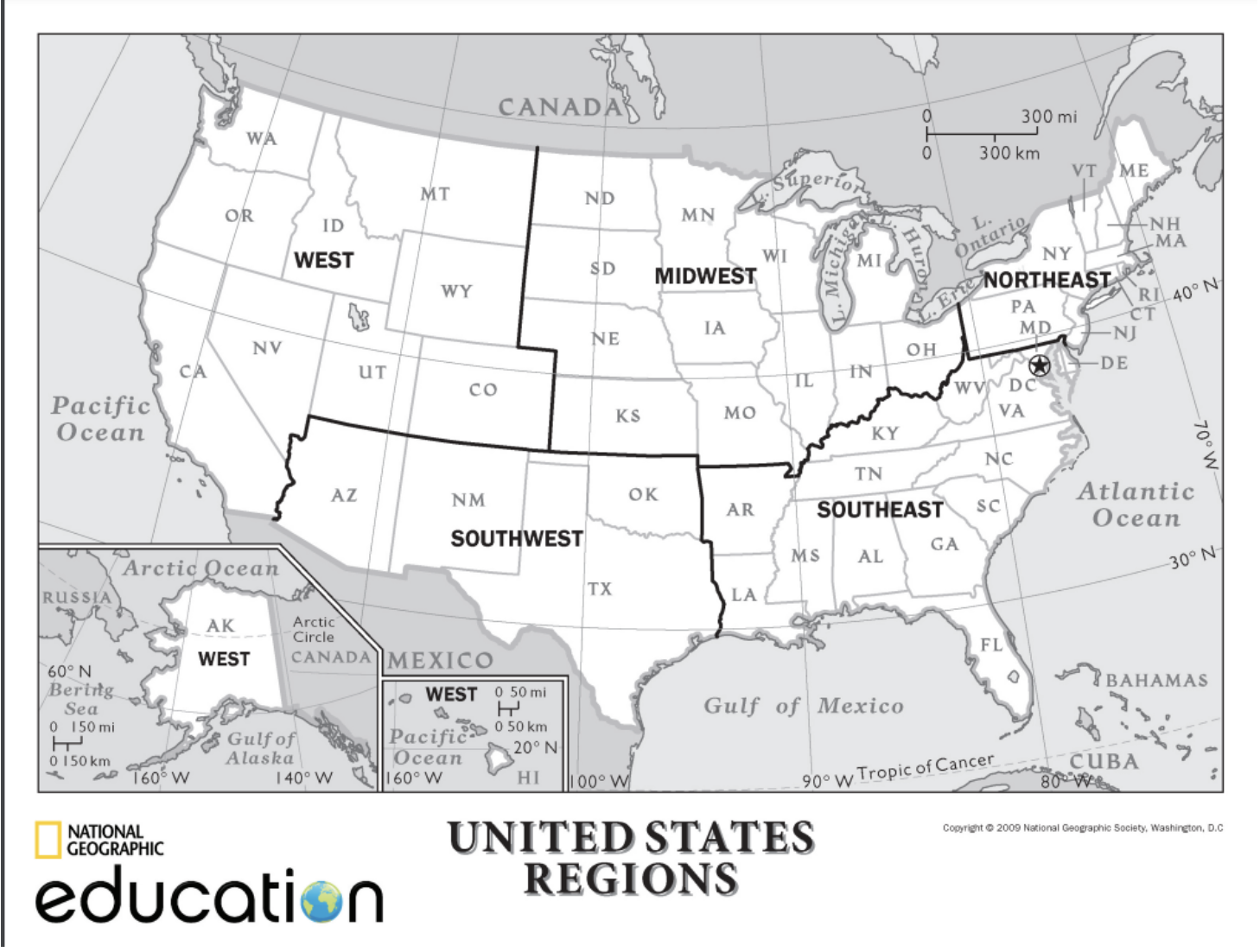Regions & Climates in the U.S.


The students’ academic, professional and personal language learning goals are #1, but given the diversity of climate and geography in the U.S., it’s important to include this discussion in your advising sessions.
Keep the following mind:
-
The type of climate & geography the student is coming from or accustomed to and potentially the new type of climate and geography where they will be living in the US
-
Different seasons and weather patterns in certain parts of the US
-
Concerns about weather events (e.g., hurricanes, tornadoes, earthquakes)
-
Plans to travel to other places in the US
-
Level of adventure / trying something new (e.g., outdoor activities)
-
Location of family or friends they'd like to visit or see regularly
The United States can be divided into five regions: the Northeast, the Southwest, the West, the Southeast, and the Midwest. Each of these regions has its own unique climate.
Northeast: The climate in the Northeast is quite diverse. Winters in this region are very cold, often accompanied by harsh weather such as ice storms and snowstorms. The average winter temperatures can drop well below 0 degrees Fahrenheit. Summers are semi-humid, especially in the southern areas, and they are characterized by relatively moderate temperatures.
Fun things to do in the Northeast:
- Visit large cities like New York City, Boston, Philadelphia, Washington, DC
- Ski in Vermont
- Check out the beautiful autumn colors
- Take advantage of accessibly public transportation
Southwest: The Southwest region experiences a dry climate with hot summers and mild winters. This region is known for its arid landscapes and desert-like conditions. Summers can be scorching, with temperatures often exceeding 100 degrees Fahrenheit, while winters are generally mild and pleasant.
- Visit the Grand Canyon in Arizona
- Go hiking, mountain biking, skiing, white-water rafting
- Learn more about Tex-Mex culture and food
- Learn about Native American influences
West: Along the West Coast, the climate varies depending on the location. As you travel farther north, the climate becomes cooler and wetter. Winters are generally cool and wet, while summers are dry and cool. Evenings tend to be chilly, with average temperatures ranging from the 50s to 60s.
Fun things to do in the West:
- Hike in Glacier National Park in Montana
- Watch Old Faithful erupt in Wyoming
- Hike or ski in the Rocky Mountains in Colorado
- See shows in Las Vegas, Nevada
Southeast: The climate in the Southeast is characterized as humid and sub-tropical. Winters are relatively mild, and the region experiences warmish temperatures. Summers in the Southeast are very hot and humid, with average temperatures frequently exceeding 100 degrees Fahrenheit. This region is known for its sultry and tropical-like weather conditions.
Fun things to do in the Southeast:
- Visit some of the larger cities like Atlanta, New Orleans, Miami
- Learn more about the American Civil War
- Hike the Appalachian Trail
- Learn about jazz music
- Visit the beaches along the east coast and Gulf of Mexico
Midwest: The Midwest shares similarities with the Southeast in terms of humid summers. However, winters in the Midwest are typically colder than in the Southeast with significant snowfall in some areas. The summers are humid, and the region experiences a moderate amount of rainfall throughout the year.
Fun things to do in the Midwest:
- Visit cities like Chicago, Illinois; Detroit, Michigan; Minneapolis, Minnesota
- Watch cars race at the Indy 500 in Indiana
- Enjoy Kansas City style barbecue in Missouri
- Check out some of the largest lakes in the world (Great Lakes)
It's important to note that these descriptions provide a general overview, and the climate within each region can still vary from place to place.
Other Resources:
